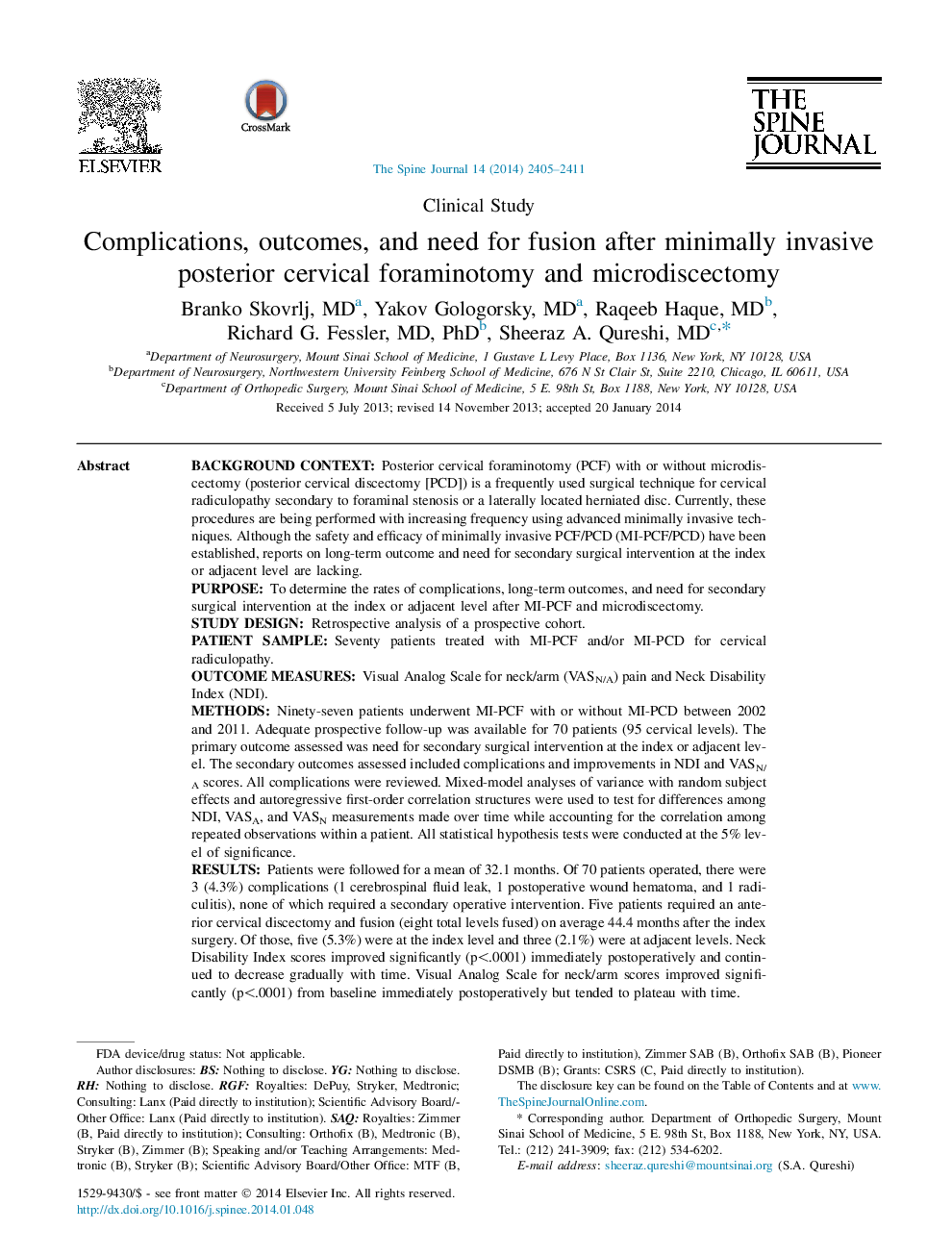| Article ID | Journal | Published Year | Pages | File Type |
|---|---|---|---|---|
| 4096753 | The Spine Journal | 2014 | 7 Pages |
Background contextPosterior cervical foraminotomy (PCF) with or without microdiscectomy (posterior cervical discectomy [PCD]) is a frequently used surgical technique for cervical radiculopathy secondary to foraminal stenosis or a laterally located herniated disc. Currently, these procedures are being performed with increasing frequency using advanced minimally invasive techniques. Although the safety and efficacy of minimally invasive PCF/PCD (MI-PCF/PCD) have been established, reports on long-term outcome and need for secondary surgical intervention at the index or adjacent level are lacking.PurposeTo determine the rates of complications, long-term outcomes, and need for secondary surgical intervention at the index or adjacent level after MI-PCF and microdiscectomy.Study designRetrospective analysis of a prospective cohort.Patient sampleSeventy patients treated with MI-PCF and/or MI-PCD for cervical radiculopathy.Outcome measuresVisual Analog Scale for neck/arm (VASN/A) pain and Neck Disability Index (NDI).MethodsNinety-seven patients underwent MI-PCF with or without MI-PCD between 2002 and 2011. Adequate prospective follow-up was available for 70 patients (95 cervical levels). The primary outcome assessed was need for secondary surgical intervention at the index or adjacent level. The secondary outcomes assessed included complications and improvements in NDI and VASN/A scores. All complications were reviewed. Mixed-model analyses of variance with random subject effects and autoregressive first-order correlation structures were used to test for differences among NDI, VASA, and VASN measurements made over time while accounting for the correlation among repeated observations within a patient. All statistical hypothesis tests were conducted at the 5% level of significance.ResultsPatients were followed for a mean of 32.1 months. Of 70 patients operated, there were 3 (4.3%) complications (1 cerebrospinal fluid leak, 1 postoperative wound hematoma, and 1 radiculitis), none of which required a secondary operative intervention. Five patients required an anterior cervical discectomy and fusion (eight total levels fused) on average 44.4 months after the index surgery. Of those, five (5.3%) were at the index level and three (2.1%) were at adjacent levels. Neck Disability Index scores improved significantly (p<.0001) immediately postoperatively and continued to decrease gradually with time. Visual Analog Scale for neck/arm scores improved significantly (p<.0001) from baseline immediately postoperatively but tended to plateau with time.ConclusionsMinimally invasive PCF with or without MI-PCD is an excellent alternative for cervical radiculopathy secondary to foraminal stenosis or a laterally located herniated disc. There is a low rate (1.1% per index level per year) of future index site fusion and a very low rate (0.9% per adjacent level per year) of adjacent-level disease requiring surgery.
